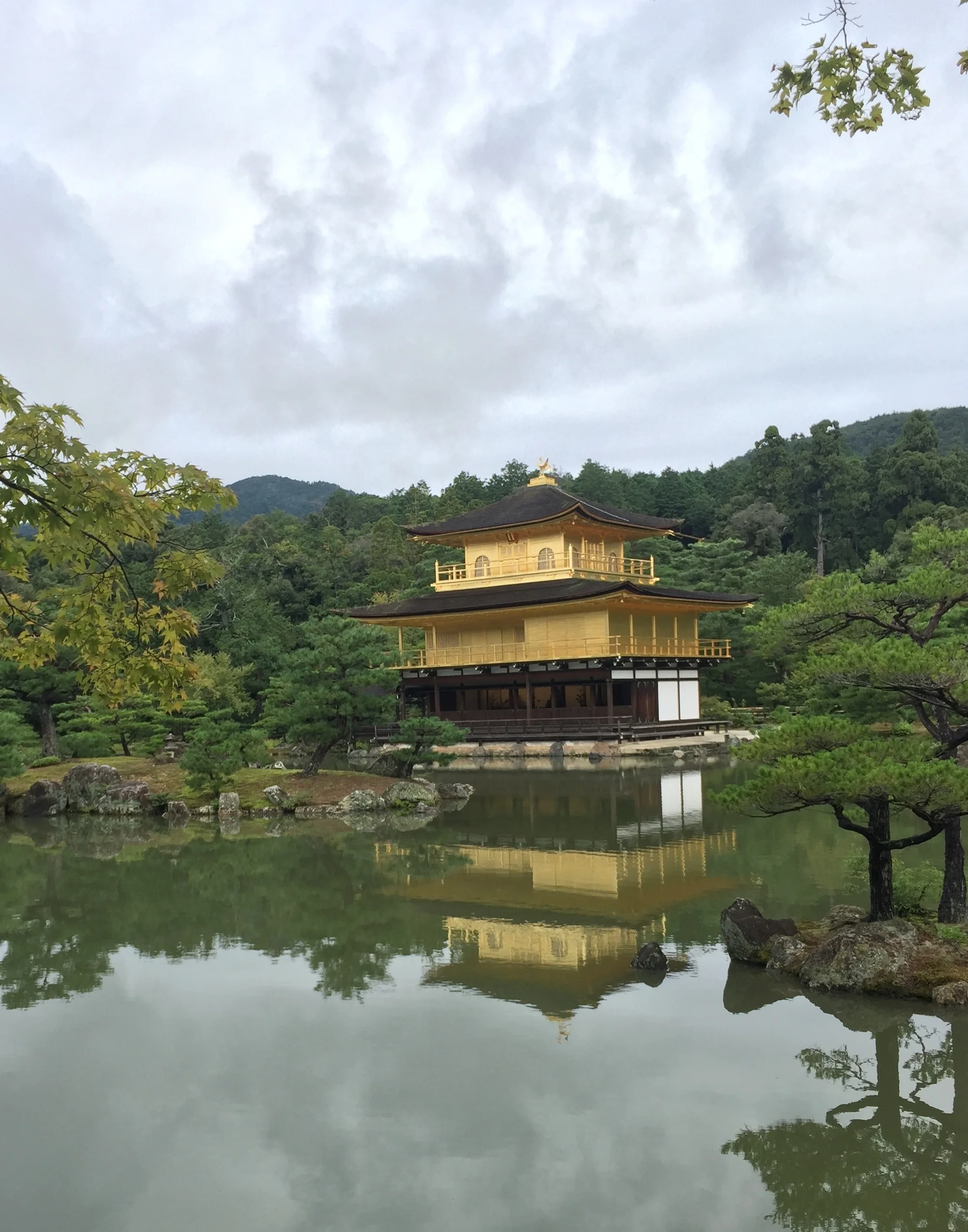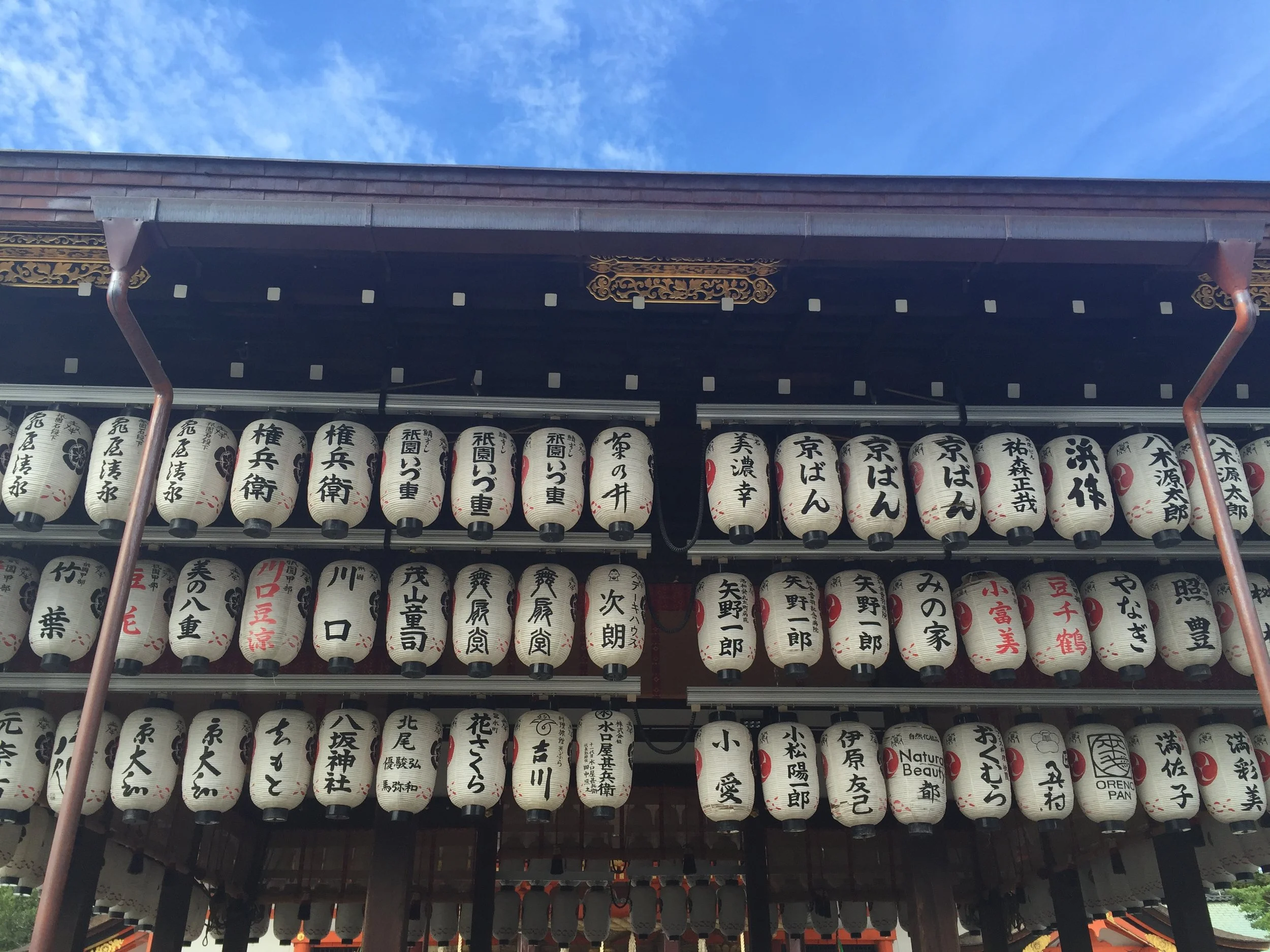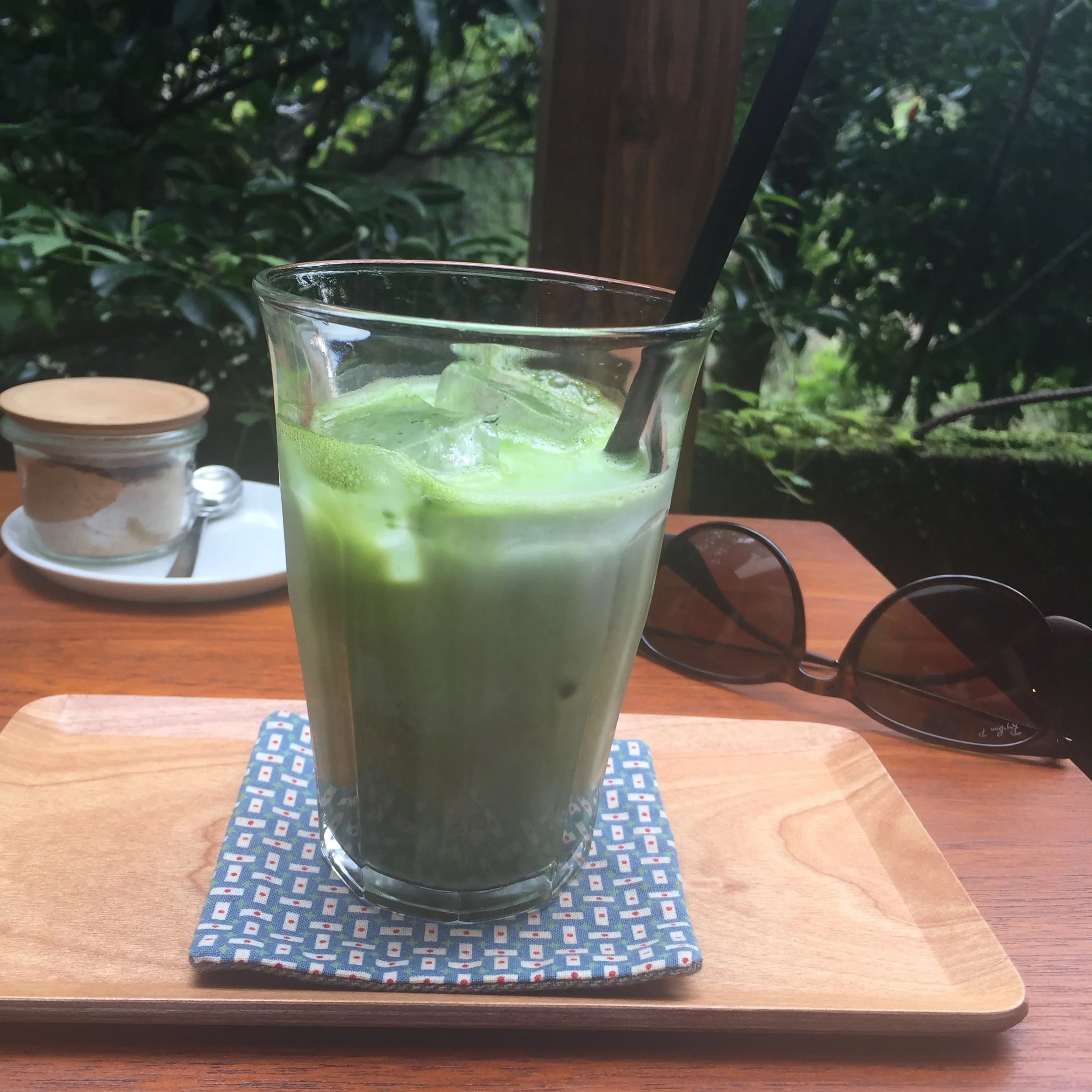kyoto, japan
Spared from bombing during World World II, Kyoto is where to go to get your temple fix. An ode to the past, the city in many ways feels like stepping back in time to immerse yourself in history and Japan's traditional culture. You'll come across temples and shrines around every corner, and could spend days wandering through the cities side alleys and marveling at the architecture. Women in geisha dress (actual geishas are very rare, but many tourists dress up in the traditional kimono) can be seen walking through town. And the food! Yum.
Many guide books will direct you to begin sightseeing in the Southern Higashimaya neighborhood, followed by Northern Higashimaya for the most important shrines, temples and cultural sites. Be warned that many of these spots draw a lot of tourists, so I'd recommend going early in the day or later in the afternoon, right before the temples and shrines close, in order to avoid the crowds as much as possible. Due to our jet lag we got fairly early starts each morning, and that ended up being a big, unintended advantage for us. My highlights from our time in Kyoto were exploring the Arashiyama Bamboo Forest at dawn, wandering the Path of Philosophy after an amazing lunch at Omen, sampling sake at Yoramu and relaxing on the bank of the river.
Pack... Walking shoes that are easy to remove (you'll be taking your shoes off to enter homes, temples and some restaurants). And definitely bring a camera.
Sleep... We stayed in a lovely home that is 120-year-old through Airbnb. I'd highly recommend this place for both the location, our wonderful host and the traditional Japanese experience of sleeping on futons on the tatami floor. The Ritz Carlton Kyoto is a great choice if you are looking to splurge - recently renovated and set right on the river, it is the epitome of Japanese luxe. Kyoto is also a good place to stay in a traditional Japanese B&B, called ryokan. However, we saved this experience for the onsen town of Kinosaki.
Read... Memoirs of a Geisha by Arthur Golden
Bring home... Handmade Japanese sake set from Cafe Green Door.
Try... Matcha. Ground up green tea that is highly concentrated with antioxidants, and can be found on the menu in most coffee shops.
Get around... The central areas are very walkable, so to me that was the best way to see the city. The bus and subway system are very easy to navigate as well when you need a break from walking. We bought a bus pass one day which made it very easy to jump on and off a few times and move around town quickly.
Tip... Bring cash for most restaurants.
{ eat & drink }
Omen means noodles, and that's what they do best at this must-visit restaurant. This spot is famous for their incredible udon noodles, served with either hot or cold sauce for dipping. Be sure to order the tempura as well. There are a few locations across the city. We went to the location a few minutes from Ginkakuji-ji Temple in Northern Higashiyama, it was a perfect lunch spot, a welcoming and friendly staff with counter seats, tatami seating as well as a few regular tables. (Stop by the temple after lunch!) This was one of my favorite meals during our entire trip.
Anzukko - if you like gyoza, Anzukko is a great place to fill up. Only open for dinner, we arrived early to avoid a wait at the small, upstairs space. Run by the sweetest woman who both cooks and waits on you, she knows what she is doing! For me, the highlight was the original gyoza in the iron pan fried right in front of you and then flipped over and served in the same pan. The crispy bottom of those qyozas . There are several other gyoza options to try, including whole shrimp, seafood and cheese filled gyozas. Yumm.
Chao Chao - more gyoza. This low key spot is popular with locals and super delicious. Sit at the bar and dig in!
Cafe Green Door - This cute little restaurant was the front of our Airbnb. Serving simple sandwiches and pizza, the pita bread is made in house and is delicious. This made for a perfect breakfast before we set out for our day! Our Airbnb host is the chef and manager of the cozy cafe, and sells Japanese ceramics handmade by his father. I still regret not buying a sake set to take home!
Takishimaya - The famous department store has a selection of restaurants on the top floor and a food market in the basement. While a meal at a restaurant in a mall or train station came highly recommended, the restaurants seemed very sterile to us. We decided to sample a few if the stalls in the downstairs food market, and took our gyoza and shumai to eat on the river.
Yoramu - This sake bar is a gem. Its a small, cozy spot with just a few seats at the bar. If you are lucky enough to snag one, you will be treated to sake education. Sake is the only thing on the menu, but Check before you go as they are closed a few nights each week, and you may want a reservation.
Bungalow - We heard good things about this place as a spot for craft beer, but didn't get a chance to try ourselves.
{ September 2016 }
{ wander }
You could spend days trapsing all across Kyoto just visiting the 1,600 Buddhist temples & 400 Shinto shrines found around practically every corner. We only had time to explore a handful, and I'm certainly not an expert on the significance and differences between each of them, but for me the highlights include:
Kinkaku-ji or the Golden Pavillon, is a Zen Buddhist temple located in Northwest Kyoto. The structure originally served as x but was rebuilt in 1955 after the 14th century original was burned down by one of the temples monks. The top two floors are completely covered in gold leaf, creating a breathtaking, shimmering reflection in the pond. This is one of the most iconic temples in Japan and certainly feels that way with the amount of tourists it draws each day. Kinkaku-ji is now a UNESCO World Heritage Site.
Ginkakuji-ji. Known as the Silver Pavilion, Ginkaku was built as a retirement home for Shogun Ashikaga Yoshimasa in 1482. (Note, shogun means military dictator, and were the rulers of the country from about 1185 to 1868). The villa and gardens became a Buddhist temple complex after his death, as he had become a Zen Buddhist monk a few years earlier. The real highlight here are the gardens. You can stroll through for lovely views and a relaxing reprieve from the city.
Fushimi Inari-taisha. One of the most important Shinto shrines in the country, Fushimi-Inari is dedicated to Inari, the Shinto God of rice, and sits at the base of a mountain named Inari. Best known for the thousands of vermillion red torii gates crossing the mountain, you can spend hours exploring these trails, with photo opps around every corner! No fee to enter. Stop in at Vermillion Cafe on your way down the mountain to cool off with a refreshing iced matcha latte on their outdoor patio.
Arashiyama Bamboo Grove. Absolutely breathtaking. We were up early one morning (#thanksjetlag) and on a whim took the train out to Arashiyama, about an hour long trip. What we didn't plan for was arriving before a single other person, and getting to experience the magic of standing amid the thick grove of bamboo completely alone. For me this was one of the highlights of our trip, and I'd highly recommend the early morning wake up to beat the crowds. No fee to enter.
Run & relax on Kamo River. A popular early evening activity, buy some beers in the convienance store and enjoy these on the bank of the river with many of the young locals (drinking in public is legal in Japan). The path along the river is a great jogging spot in the morning.
Path of Philosophy - A peaceful, cherry tree-lined walk along a canal in the northern part of the Higashimaya district. We paired this with lunch at Omen and a visit to Ginkakuji, walking back towards our Airbnb along the path. The path is about 2km long, and gets its name from Nishida Kitaro, one of Japan's famous philosophers who was said to walk this path each day on his way to work at Kyoto University.




